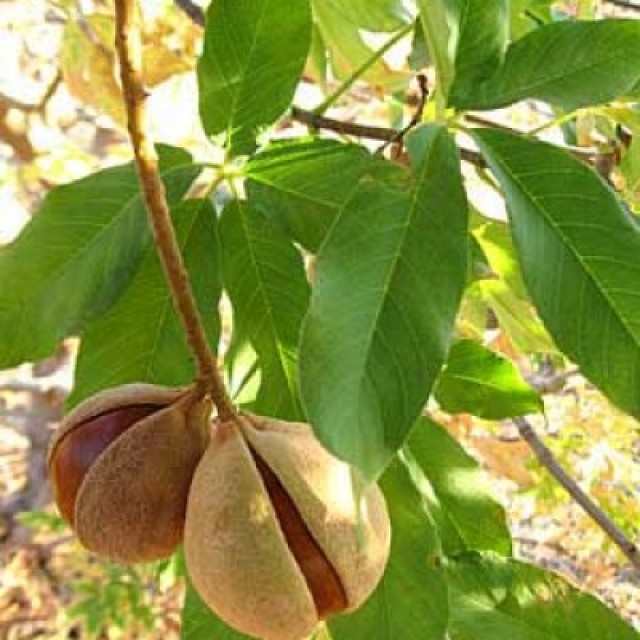COMMON NAME
California buckeye
SCIENTIFIC NAME
Aesculus californica
ALSO KNOWN AS
California horse-chestnut
Plant family
Soapberry (Sapindaceae)
Plant group
Deciduous Trees and Shrubs
California buckeye is a deciduous shrub or tree that has a broad, rounded crown. The palmately compound leaves occur in leaflets of 5 to 7. It has many showy flowers (white to pale pink) that are found in erect spikes. The fruit is pear-shaped and smooth with a tan coating similar to the peel on a citrus fruit. As it splits open it yields an orange-brown shiny seed. Source: USDA Plants Database
82 reports
24+
OBSERVERS
82+
OBSERVATIONS
Identification hints
California buckeye can grow to be 12-40 feet tall. It has thin grey bark that is often covered with lichens. The leaves are dark green, palmately compound with 5 to 7 leaflets. Each leaflet is 2.4-6.7 inches long, with finely-toothed margins. The flowers are sweet-scented, white to pale pink, borne on erect panicles 6-8 inches long. Most of the flowers in each cluster are male and, thus, incapable of producing seeds; only two or three at the tip are fertile and will produce the actual buckeyes, which ripen in the fall. The fruit is a fig-shaped husk 2-3 inches long, containing a large, round, orange-brown seed.
Did you know?
Well adapted to California's Mediterranean climate with wet winters and dry hot summers,the California buckeye has adapted by growing during the late winter & spring and entering dormancy in the summer. Shortly after it flowers, its leaves turn yellow or brown and begin to wither and fall. This continues throughout the summer. Native Americans ate the buckeye seeds, but they are poisonous in their raw state, so they ground the nuts to leach out all the saponins before cooking them.
DISTRIBUTION IN TH U.S.
There is no information available about this species.
HABITAT
There is no information available about this species.
See Menu
- 2021 Chicago Botanic Garden. All Rights Reserved.
-
Creative Commons
BY-NC-SA 4.0 - Terms of Use
- Privacy Policy
- Data Sharing and Citation Policies
- 2021 Chicago Botanic Garden. All Rights Reserved.



